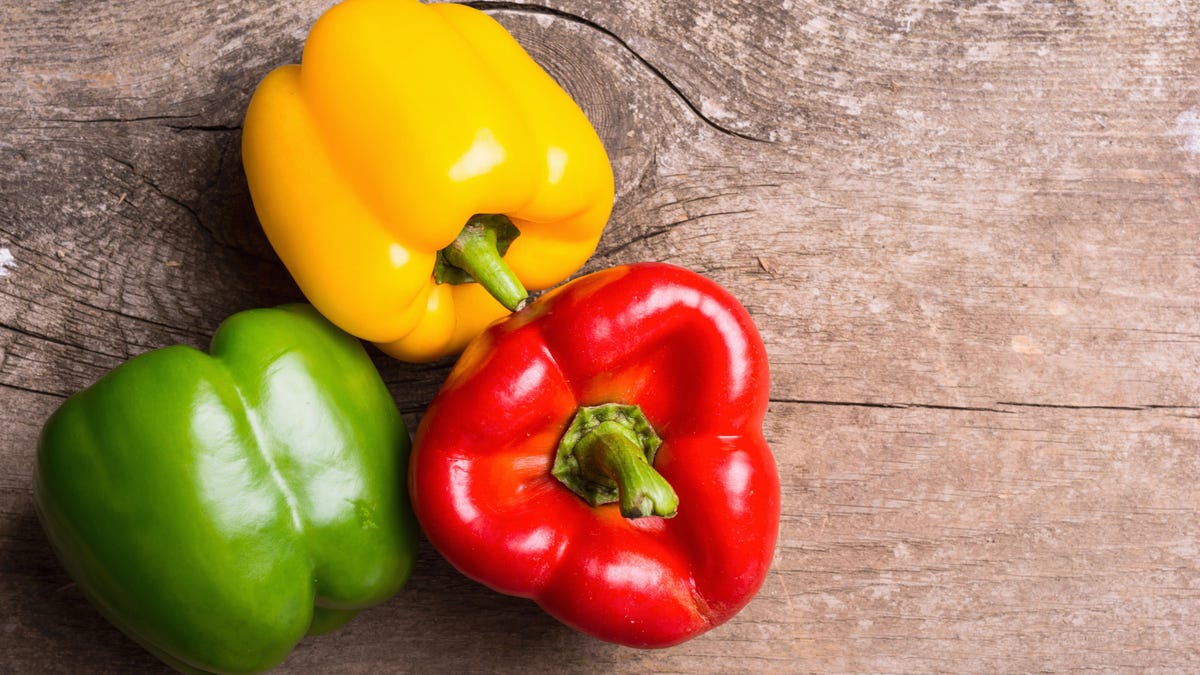
Some of your favorite produce might be dicier to eat than assumed. An analysis from Consumer Reports published Thursday suggests that a substantial portion of commonly sold fruits and vegetables have a significant risk of exposure to dangerous pesticides—around 20%. Bell peppers, watermelons, and blueberries were some of the most exposed produce.
Pesticides are routinely used to control populations of insects and other pests that can infest or harm our crops. Regulators try to reduce the impact of these chemicals on human health by setting limits for how much residue is allowed to remain on our foods and outright banning pesticides deemed too dangerous for consumption. Since the mid-1990s, hundreds of pesticides have been restricted or removed from use on the foods Americans eat, and according to the Environmental Protection Agency, our food is likely the cleanest it’s ever been, pesticide-wise.
Advertisement
But organizations like Consumer Reports argue that there’s still a lot more that could be done to keep our produce safe. It has been independently tracking the use of pesticides on our produce for quite some time now, and its latest investigation analyzed seven years’ worth of data from the U.S. Department of Agriculture. Consume Reports looked at nearly 30,000 test samples from 59 fruits and vegetables commonly found on store shelves, both domestic and imported.
Advertisement
Based on their own assessment, the report determined that 20% of the produce studied carried a high risk of exposure to unsafe pesticides. The high-risk products included blueberries, potatoes, imported strawberries (fresh or frozen), watermelons, kale, and hot peppers. Some examples of low-risk produce were mushrooms, oranges, peaches, scallions, and canned tomatoes.
Advertisement
This risk was determined not only by looking at the total number or dose of pesticides found in a product sample but also by how often these chemicals appeared across all the samples and whether the product contained chemicals that were judged to be more harmful than others. Green beans, for example, were sometimes found to contain detectable levels of acephate, a pesticide banned from use on the crop over a decade ago.
It’s worth noting that Consumer Reports used a lower threshold of tolerance for the pesticides detected in the USDA data than the standards adopted by the EPA, arguing that these levels do not adequately capture the full potential of harm such chemicals can cause. Many of the pesticides analyzed are thought to be endocrine disruptors, for instance—a class of chemicals that can mimic the body’s hormones. Studies have suggested that these chemicals could affect our health over a long or heavy enough period of exposure or during certain moments of our lives, such as puberty or pregnancy.
Advertisement
“The way the EPA assesses pesticide risk doesn’t reflect cutting-edge science and can’t account for all the ways the chemicals might affect people’s health, especially given that people are often exposed to multiple pesticides at a time,” said Michael Hansen, a senior scientist at Consumer Reports, in an article announcing the report’s findings. “So we take a precautionary approach to make sure we don’t underestimate risks.”
Not everything in the report is doom and gloom. Nearly two-thirds of the produce were judged to be low-risk. And much of the danger seems to come from only a few pesticides across a low number of crops. That suggests that it should be relatively easy to mitigate these threats if the EPA can be compelled to do so. It also means that people should be able to avoid or at least limit their consumption of these problem fruits and vegetables if they want to, which might be more important during certain periods of time.
Advertisement
The report authors argue that children and pregnant people should consume less than a serving a day of high-risk produce, and less than half a serving per day of very high-risk ones. They also note that organic produce, in general, is more likely to have a low risk of dangerous pesticide exposure, though these foods are often more expensive.
“That’s why, while we think it’s always worth considering organic produce, it’s most important for the handful of fruits and vegetables that pose the greatest pesticide risk,” said James Rogers, a food safety expert at Consumer Reports.
Advertisement
A full list and risk assessment of the fruits and vegetables studied by Consumer Reports can be seen on the report’s page.
Services Marketplace – Listings, Bookings & Reviews